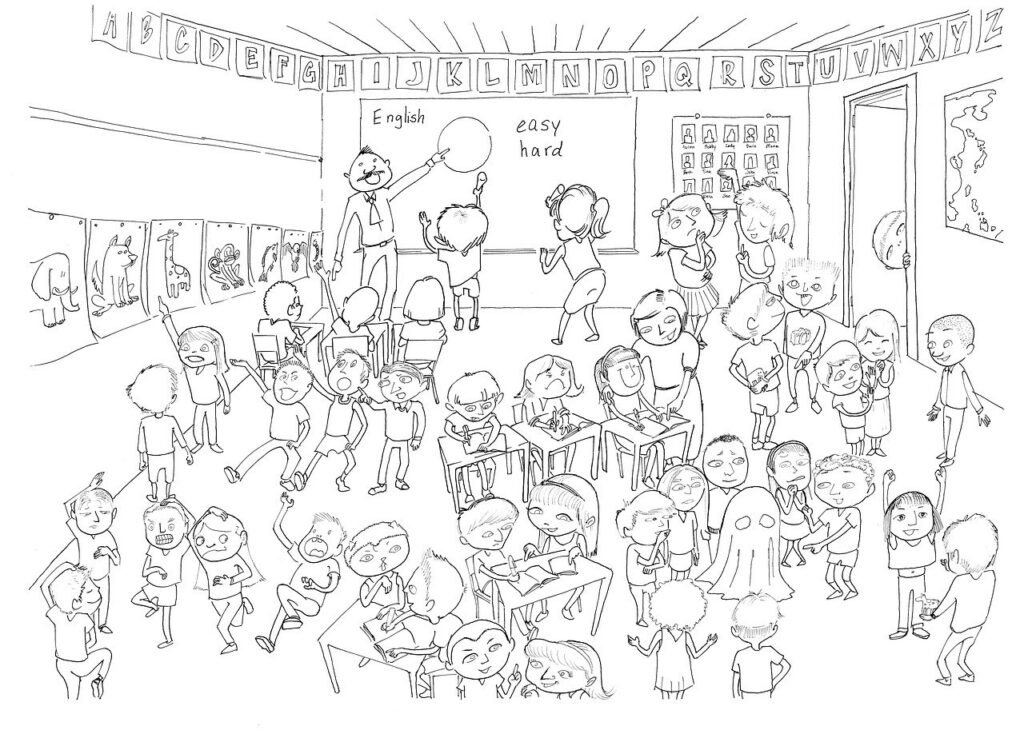Consistent Classroom Routine
Establishing a consistent classroom routine is a foundational element of effective teaching and learning. A well-developed routine provides structure, organization, and predictability for both teachers and students. It sets the tone for a productive and focused learning environment, enhances student engagement, and supports positive behavior management. In today’s teaching blog, we will explore the importance of developing a classroom routine and the benefits it offers to teachers and students. Additionally, we will provide practical strategies for creating and implementing a routine that promotes a harmonious and successful classroom experience.
1. Structure and Organization:
A well-developed classroom routine sets the stage for success by establishing clear expectations and procedures. It minimizes disruptions, allowing teachers to maximize instructional time and create a focused learning environment. With consistent routines, students feel secure, know what to expect, and can engage more deeply in their learning. By incorporating effective classroom management strategies and promoting a positive atmosphere, educators can create a supportive space where students thrive and achieve their full potential. Consider the following benefits:
Smooth transitions:
A routine guides students seamlessly from one activity to another, minimizing disruptions and maximizing learning time. Smooth transitions help maintain momentum and focus throughout the day.
Clarity and predictability:
A routine clarifies expectations and provides a predictable schedule for students. When students know what to expect, they feel more comfortable and secure in the classroom environment, which contributes to their overall well-being and engagement.
Task and time management:
A routine assists students in managing their tasks and time effectively. It helps them prioritize their responsibilities, set goals, and allocate appropriate time for various activities. This skill is crucial for their academic and personal development.
2. Behavior Management:
Developing and adhering to a classroom routine supports effective behavior management. A well-defined routine provides students with clear guidelines and expectations, fostering a sense of structure and discipline. It helps establish consistent boundaries, enabling teachers to address behavioral issues promptly and effectively. By consistently reinforcing the routine, teachers can prevent disruptions, maintain a focused learning environment, and promote positive behavior. Students feel empowered and secure within this structured framework, allowing them to focus on their learning and actively engage in classroom activities. A solid classroom routine is a powerful tool for cultivating a positive and productive learning environment. Consider the following benefits:
Consistency:
A routine establishes consistent expectations for student behavior. When students understand the routine and know what is expected of them, they are more likely to exhibit positive behaviors consistently.
Reinforcement of expectations:
By consistently following the routine, teachers reinforce expectations for behavior. This repetition helps students internalize and understand the desired behaviors, making them more likely to comply.
Reduced disruptions:
A routine minimizes disruptions caused by misbehavior or confusion about what students should be doing. Clear expectations and a structured environment reduce the likelihood of off-task behavior, creating a more focused learning environment.
Increased self-regulation:
Consistent routines help students develop self-regulation skills. As they become familiar with the routine, they learn to manage their behavior independently and make responsible choices.
3. Academic Engagement:
A well-developed routine not only provides structure and organization but also enhances student academic engagement and learning outcomes. When students are familiar with the daily procedures and expectations, they can quickly transition into learning mode, optimizing their focus and attention. With reduced disruptions and increased efficiency, more time can be dedicated to meaningful instruction and active student participation. This, in turn, leads to improved learning outcomes, as students are fully engaged, actively participating, and making the most of their educational experience. Consider the following benefits:
Smooth transitions between activities:
A consistent routine helps students transition smoothly between activities, minimizing downtime and maximizing instructional time. This seamless flow promotes engagement and reduces the potential for disruptive behaviors.
Reduced cognitive load:
When students know what to expect and understand the structure of the classroom routine, they can focus more fully on the content and tasks at hand. Reduced cognitive load allows students to devote their attention and energy to learning.
Enhanced time management skills:
A routine teaches students valuable time management skills. By following a structured schedule, they learn to prioritize tasks, manage their time effectively, and complete assignments within given time frames.
Increased autonomy and independence:
A routine fosters independence and autonomy in students. As they become familiar with the routine, they develop a sense of ownership over their learning and take responsibility for managing their tasks and time.
4. Practical Strategies for Developing and Implementing a Classroom Routine:
To develop and implement a successful classroom routine, consider the following strategies:
Establish clear expectations:
Clearly communicate behavior and academic expectations to students. Explain the purpose and benefits of the routine, and ensure that students understand the importance of following it.
Involve students in the process:
Engage students in discussions about the routine. Seek their input and allow them to contribute ideas and suggestions for the classroom routine. This involvement promotes a sense of ownership and responsibility among students, as they feel valued and included in the decision-making process.
Create a visual schedule:
Develop a visual schedule that outlines the daily routine and displays it prominently in the classroom. Use visual cues such as pictures, icons, or color-coding to make it easily understandable for students of all ages.
Teach and practice the routine:
Introduce the routine to students explicitly, step-by-step, and provide opportunities for guided practice. Model each component of the routine and provide feedback as students practice following it.
Reinforce positive behavior:
Recognize and reinforce students’ adherence to the routine. Use positive reinforcement strategies such as verbal praise, stickers, or a class reward system to acknowledge and celebrate their efforts.
Adjust and adapt as needed:
Be flexible and open to adjusting the routine based on the needs of the students and the dynamics of the classroom. Monitor its effectiveness and make modifications if certain aspects are not working as intended.
Communicate with families:
Share information about the classroom routine with families to ensure consistency and support at home. Provide them with a copy of the schedule and explain the expectations. Encourage families to reinforce the routine at home, particularly regarding homework and study habits.
Maintain consistency:
Consistency is key in establishing and maintaining a successful routine. Stick to the schedule and expectations consistently, as this reinforces the routine and reinforces student understanding and compliance.
Conclusion:
Developing a classroom routine and adhering to it is a fundamental aspect of effective teaching and learning. A well-developed routine provides structure, organization, and predictability, contributing to smoother transitions, enhanced behavior management, increased academic engagement, and improved learning outcomes. By involving students in the process, creating visual schedules, teaching and practicing the routine, reinforcing positive behavior, and maintaining consistency, teachers can establish a supportive and productive classroom environment. Remember that a routine should be flexible and adaptable, considering the unique needs and dynamics of the students and the classroom. Embrace the benefits of a classroom routine and witness the positive impact it has on student engagement, behavior, and overall academic success.


